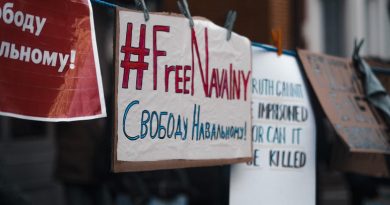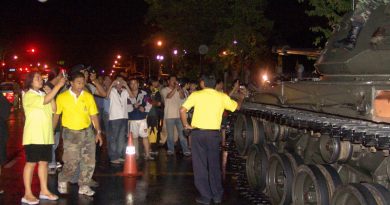In Ukraine, an Invasion and its Consequences
Alejandro Ramirez
Staff Writer
Weeks of escalating tensions in Europe reached their breaking point on February 24, when Russia officially launched its first attacks against Ukraine. As the ominous buildup of over 100,000 Russian troops on Ukraine’s border showed no signs of slowing down in the days leading up to the attack, many nations expressed concern that President Vladimir Putin was formulating plans for military operations against Ukraine, reports The New York Times. Reuters reports that Russia fully evacuated its embassy in Kyiv, and commercial flights over Ukrainian airspace were officially halted at the request of the Ukrainian government, says CNBC. Fears of an invasion were proven correct when, according to the Wall Street Journal, Putin announced a series of “special military operations” against Ukrainian military installations, claiming the threat to the people of the Donbass, combined with the Wests’ rebuke of Russian security concerns necessitated an assault on the nation to secure Russia’s national interests.
Formal acknowledgment of the self-declared Donetsk and Lugansk People’s Republics by the Russian Federation on Monday signaled that Russia was preparing for a conflict with Kyiv. Putin’s go-ahead announcement given Thursday, just as the UN Security Council was sitting down to discuss the situation, formally initiated armed hostilities between the two nations. The Wall Street Journal reports that early Thursday morning, the Russian Air Force, backed by the Black Sea Fleet stationed off the coast of Crimea, launched an intensive bombardment of strategic locations throughout Eastern and Central Ukraine, in a bid to crush any opposition and to allow the rear armored echelons to cross the border into Ukrainian territory unencumbered. CNN reports that logistics issues, troop morale, and incessant information operations against both sides have plagued the Russians from the outset, hindering the possibility of a quick and decisive outcome.
Russian troops began their advance into Ukrainian territory with a three-pronged mobilization of troops into Ukraine that looks to cripple Ukrainian resistance around the capital, re-establish the flow of the Crimean Canal, and secure the border of Donetsk and Lugansk in the East. Russian forces from the Southern front have reportedly made headway, reaching the Ukrainian port stronghold of Mariupol at the cost of heavy fighting and losses, reports Reuters.
Russian troops have also successfully re-opened the Crimean Canal, closed in 2014 in the aftermath of Maidan, which is crucial to the freshwater supply of Crimea, Reuters further adds. However, movement south from the Belarusian border towards Kyiv has stalled, and the battle for Kyiv will be a turning point as to whether Russia can force the Ukrainian capital to capitulate before the predicted civilian casualties start to mount.
According to The Telegraph, resistance in Kyiv has not wavered, as the Ukrainian Ministry of Defense began issuing small arms to citizens willing to fight for their city. Clashes between civilians and soldiers alike against the cordons of armored vehicles moving towards the city center have continued throughout the nights and show no signs of letting up.
Reactions on the part of NATO allies in Europe and the United States have been quick, with far-reaching sanctions towards Russian financial systems and members of the Russian Duma, including Putin’s inner circle, announced by the Biden Administration in tandem with EU member states.
Further reaching sanctions on Russian energy exports remain on the table should Russia escalate the conflict further, although the effectiveness of sanctions-heavy policy towards Russia has yet to be seen. The Putin administration has been quick to brush off the sanctions, although Russian media has pointed out the unlikeliness of Russia responding in turn with similar countermeasures. Likewise, the risk of a shift towards China as a safe trading partner has been pointed out by World Bank officials as a possible scenario. Russia’s exclusion from SWIFT, the commerce protocol that facilitates the global banking system, is on the table, but potential repercussions trouble Germany and other European nations. Condemnation for Russia’s actions has been predictably unanimous, albeit the noted abstention of China and Syria from calling the military operation an outright invasion, says The New York Times.
With discussions of a possible meeting for peace between the warring nations being discussed by both parties, according to The Independent, the possibility for a cessation of violence is on the horizon. None can be sure of the ultimate goals for Russia in the region other than the claims of “demilitarization” given on Wednesday, and how much longer military action will be necessary to achieve those goals will depend on the resistance of Ukraine’s military and citizenry alike. As the largest state-on-state war in Europe since WWII plays out, the entire world has its eyes turned toward the cities of Kyiv, Kharkiv, and Mariupol, where any decisive outcome in the coming days or weeks will have repercussions across the Eurasian continent for years to come.


